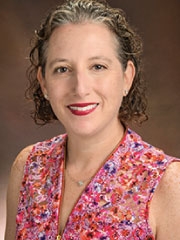Researchers from the Mitochondrial Medicine Frontier Program at Children's Hospital of Philadelphia (CHOP) have developed a comprehensive sequencing test specifically for mitochondrial DNA (mtDNA). This new clinical diagnostic test, launched in the Division of Genomic Diagnostics (DGD) at CHOP, provides important information as to whether and to what level variations in the mtDNA are present in different tissues from a patient with suspected mitochondrial disease, leading to more precise diagnosis and more personalized treatment options. The findings were recently published in the journal Molecular Genetics and Metabolism.
Mitochondrial disease describes a heterogeneous group of energy disorders. These disorders can be caused by genetic mutations found in either the body's nuclear DNA, located in the nucleus of our cells, or the mtDNA, a separate chromosome with many repeating copies found specifically within our mitochondria. The mtDNA genome has many unique features and cannot be reliably studied or sequenced through the same methods as nuclear DNA.
 Marni J. Falk, MD There are several types of pathogenic mtDNA variants that exist, including variants that might not affect a pregnant woman but could be passed down through her egg to her child. The research team wanted to develop a highly accurate and sensitive molecular method that can simultaneously detect single nucleotide variants (a single variation at a particular spot of the genome) and large-scale mtDNA deletions (LSMDs). They came up with such a test, called "MitoGenome," which they have launched as a first-tier clinical diagnostic test for patients with suspected mitochondrial disease.
Marni J. Falk, MD There are several types of pathogenic mtDNA variants that exist, including variants that might not affect a pregnant woman but could be passed down through her egg to her child. The research team wanted to develop a highly accurate and sensitive molecular method that can simultaneously detect single nucleotide variants (a single variation at a particular spot of the genome) and large-scale mtDNA deletions (LSMDs). They came up with such a test, called "MitoGenome," which they have launched as a first-tier clinical diagnostic test for patients with suspected mitochondrial disease.
"Extensive teamwork over years among the CHOP Mitochondrial Medicine clinical and laboratory teams has yielded an improved clinical diagnostic test for sensitively detecting mtDNA mutations and large-scale deletions, providing simultaneous analyses in both children and mothers, as well as highly reliable measurements of heteroplasmy levels that are necessary to accurately interpret whether the mtDNA variants are causing the individual's often complex health problems," said Marni J. Falk, MD, Executive Director of the CHOP Mitochondrial Medicine Frontier Program and Distinguished Chair in the CHOP Department of Pediatrics.
In this study, MitoGenome tests were performed on 428 samples from 394 patients with suspected or confirmed mitochondrial disease, drawing upon a wide patient base that experienced diverse healthcare problems. The positive yield from the study was 11%, which was 100% accurate in validating the causal etiology in known mitochondrial disease cases with previously known mtDNA mutations or deletions. Among all patients found to have mtDNA mutations, 34 had pathogenic or likely pathogenic single nucleotide variants, 8 patients had single LSMDs, and 3 patients had multiple LSMDs. The tool was assessed to be a highly accurate and comprehensive diagnostic method for detecting sequence variants present at levels as low as 1% and LSMDs present at low levels below 10%.
Because of its sensitivity and accuracy, the researchers say the test can provide this important information using non-invasive samples like blood, saliva, and urine, making it easier for families to participate. However, muscle samples are still the preferred tissue sample type for this test to evaluate LSMDs in some mitochondrial disease disorders that present with muscle problems, such as in a rare form of mitochondrial disease known as Kearns-Sayre syndrome.
This study was supported by the CHOP Mitochondrial Medicine Frontier Program, the National Institutes of Health (NS-021328, MH-108592,OD-010944, U41-HG008634,U24-HD093483) and the U.S. Department of Defense (W81XWH-16-1-0401, W81XWH-21-1-0128).
Wang et al, "Advanced approach for comprehensive mtDNA genome testing in mitochondrial disease." Mol Genet Metab. Online December 18, 2021. DOI: 10.1016/j.ymgme.2021.12.006.





